The Concorde made its final flight over 20 years ago and supersonic air travel has yet to return. Here's a look back at its incredible history.
Co-developed by Britain and France, Concorde was the first and only supersonic commercial airliner.
British Airways operated its final commercial Concorde flight in 2003, ending its 27-year career.
The supersonic jet remains an icon of modern aviation and a technological marvel.
For a fleeting 30 years during the 20th century, supersonic commercial air travel was a reality. But on October 24, 2003, that era came to an abrupt end.
That day, British Airways operated its last commercial Concorde service from JFK International Airport to London Heathrow. Air France pulled its Concordes from service a few months earlier. Thus, it would be the Concorde's last ever commercial flight in a career that started in January 1976.
The Anglo-French Concorde was co-developed by BAC, a forerunner of BAE Systems, and Aerospatiale, now a part of Airbus.
The supersonic jet has a storied history.
The Concorde was never the commercial success for which its creators had hoped. Environmental and operational limitations of the Concorde hampered its commercial appeal among airline customers. Only 20 of the planes were ever built, and just 14 of them were production aircraft. The Concorde saw service with only two airlines — Air France and British Airways — on just two routes.
However, its lack of commercial success doesn't diminish its role as an icon of modern aviation and as a technological marvel, one which plane makers and aerospace startups still talk about replicating.
Over 20 years after its last flight for British Airways, the world is still without a viable form of supersonic passenger service.
Here's a look back at the awesome history of the Aerospatiale-BAC Concorde supersonic airliner.
This article was originally published by Benjamin Zhang in October 2018. It was updated by David Slotnick in March 2020 and Talia Lakritz in May 2024.
As soon as Chuck Yeager crossed the sound barrier in 1947, commercial aviation companies began planning to take passengers past Mach 1.
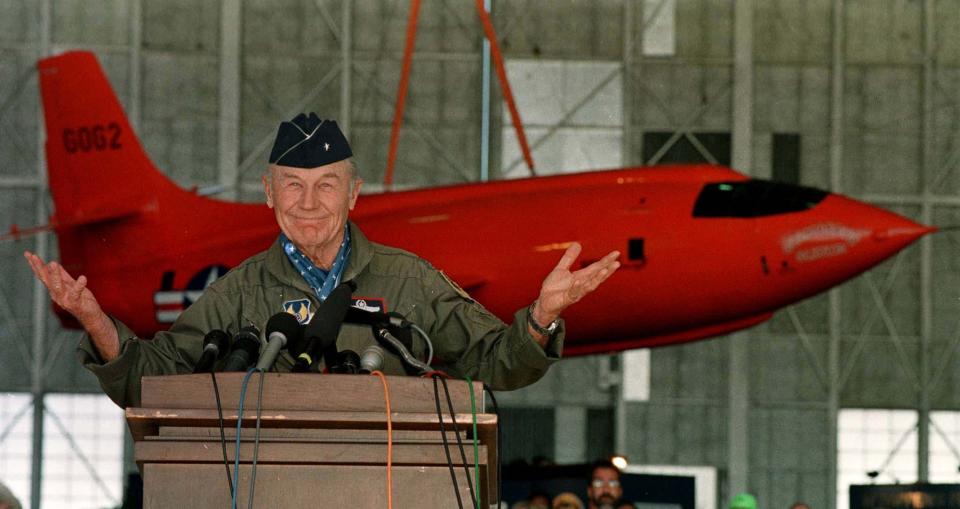
"Mach 1" is the speed of sound, or about 670 miles per hour at 30,000 feet, according to the US Air Force.
On November 29, 1962, the governments of France and Great Britain signed a concord agreement to build a supersonic jetliner, hence the name of the plane that resulted: Concorde.
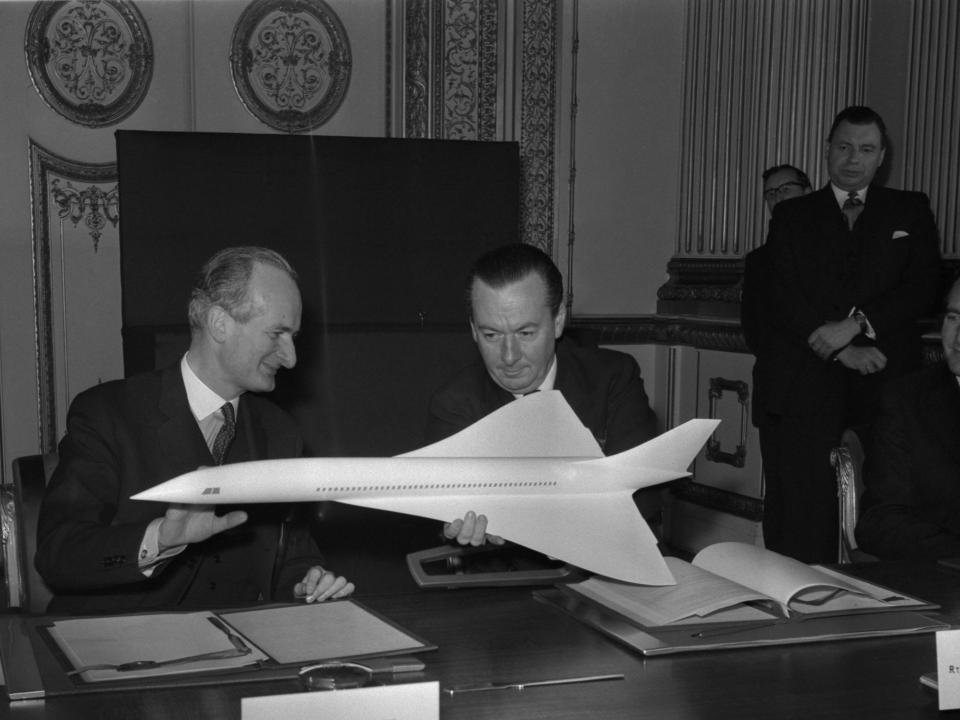
France and Great Britain each agreed to spend between £75 million and £85 million for the development of the plane, the Associated Press reported.
Together, Aérospatiale and the British Aircraft Corporation — predecessors of today's Airbus and BAE Systems — agreed to produce a four-engine, delta-wing supersonic airliner.
At the same time, engineers in the US and the Soviet Union were working on supersonic airliners of their own.
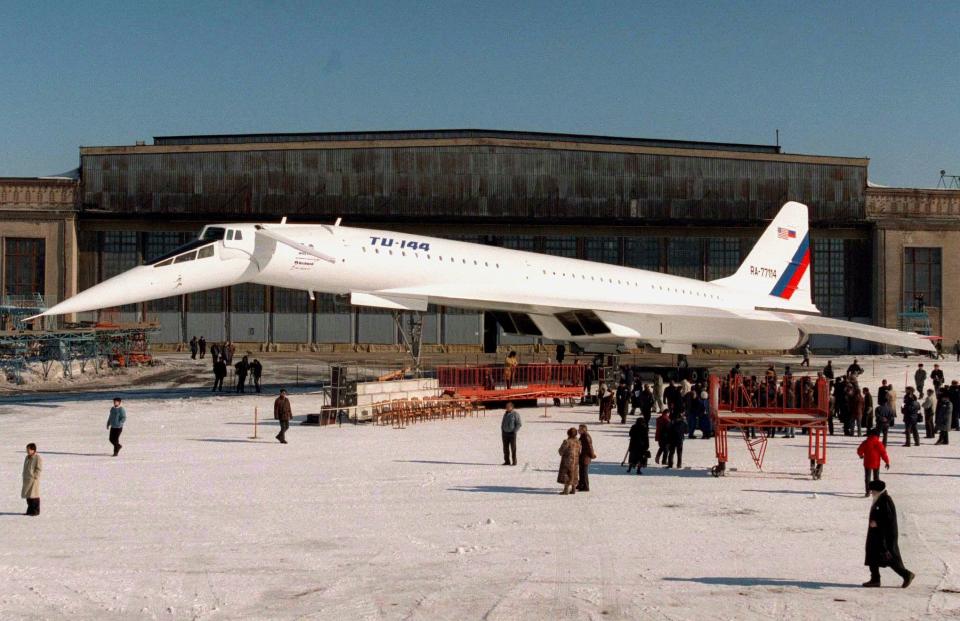
The American Boeing 2707 never made it past the drawing board, while the Soviets' Tupolev TU-144 made it into service but was quickly retired because of performance and safety problems.
As part of the agreement, the Concorde was built in the UK and France.
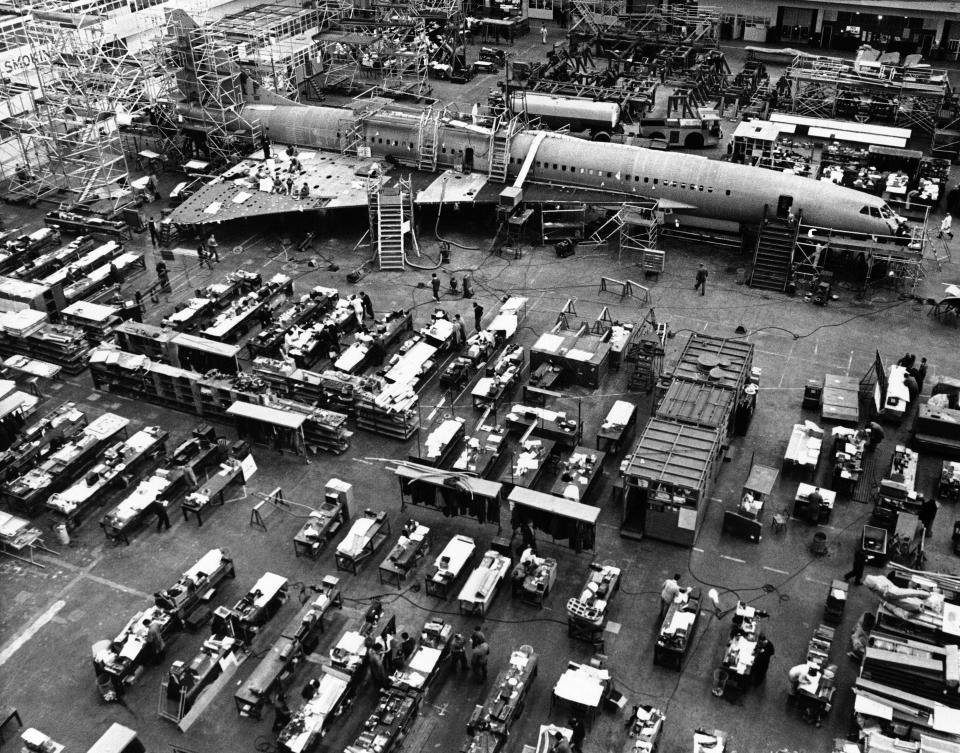
The above photo shows the Concorde being constructed at a British Aircraft Corporation factory in Bristol, UK, in 1967.
The engine selected to power the Concorde was the Olympus 593 turbojet.
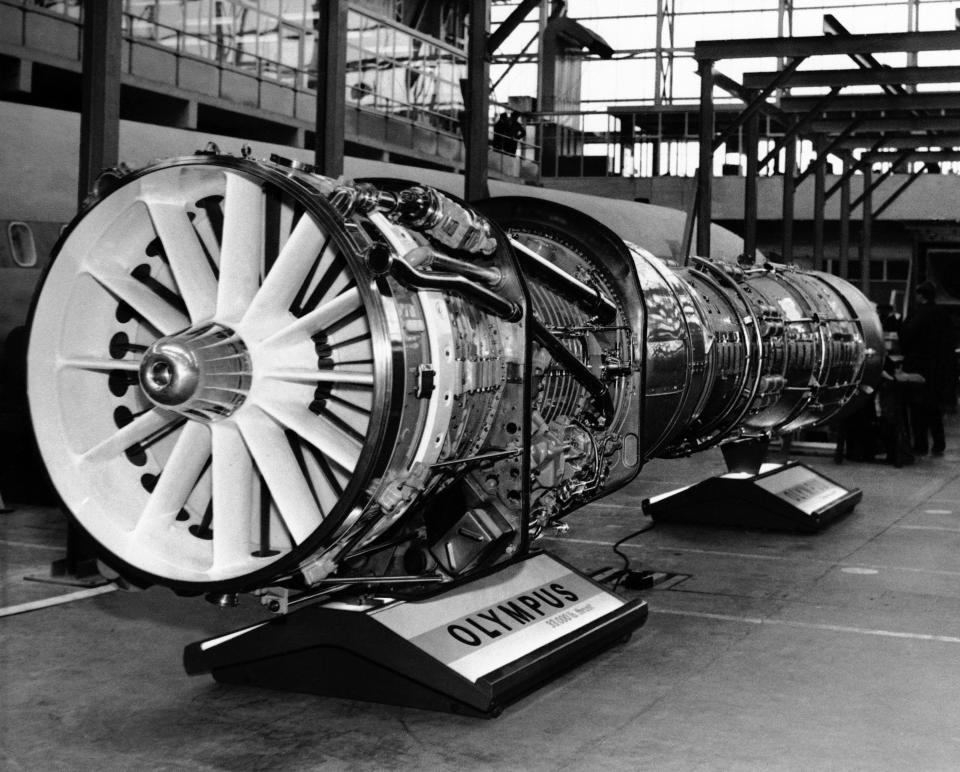
The engine was developed by Rolls-Royce/Bristol Siddeley and Snecma.
The Olympus engine's afterburners gave the Concorde its signature smoky takeoffs.
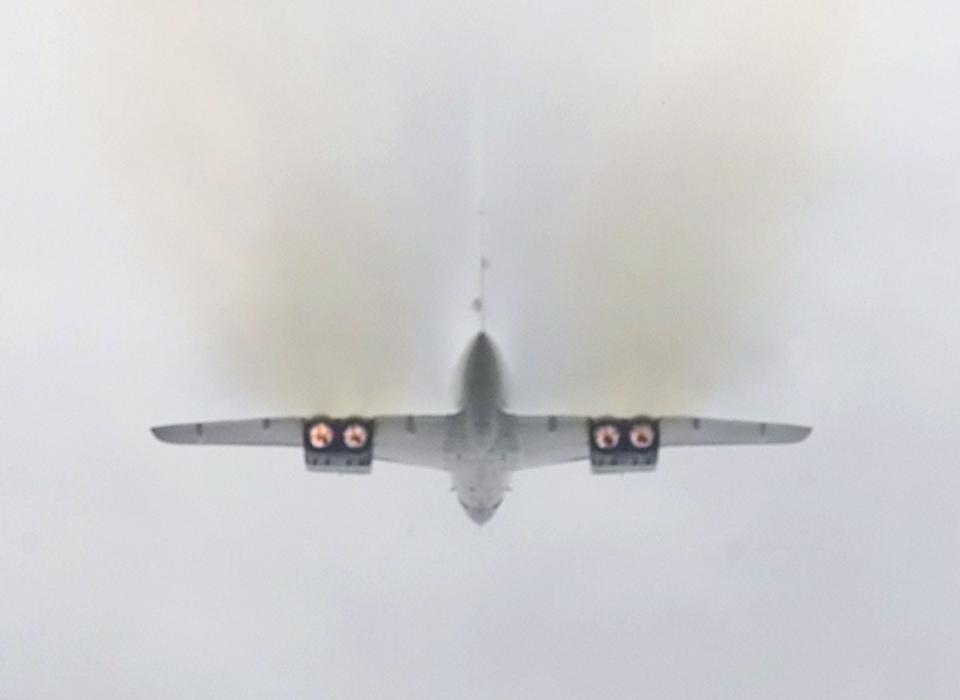
Each engine produced 38,000 pounds of thrust.
The Concorde had features found on no other Western commercial airliner, such as the double delta wing.
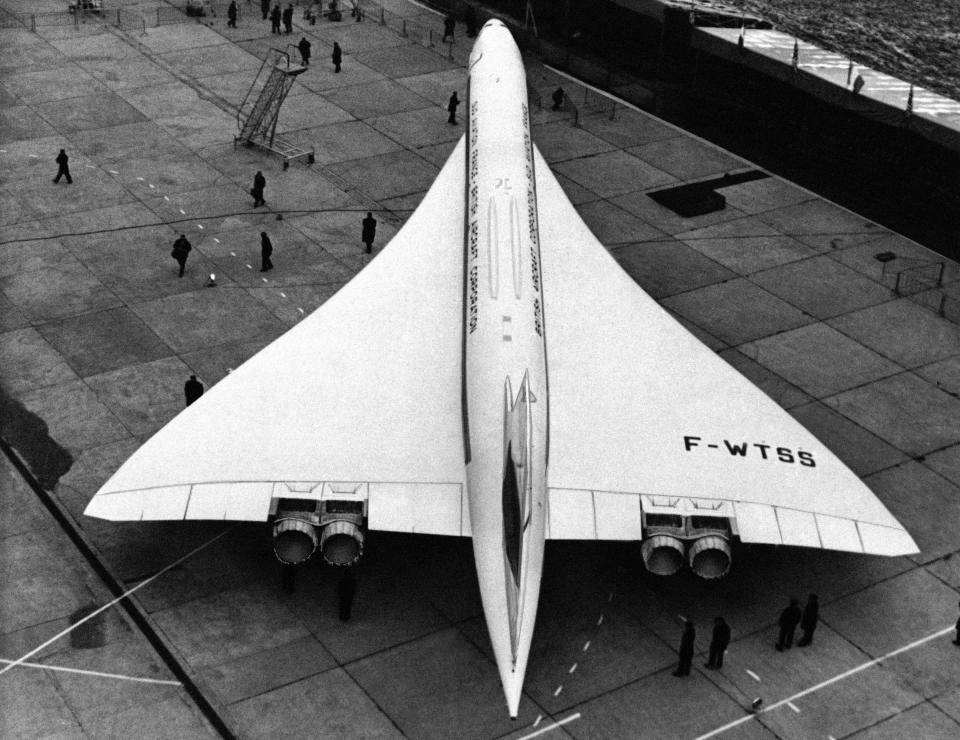
Delta wings get their name from the Greek letter delta, which is shaped like a triangle.
Concorde planes also featured an adjustable drooping nose that gave pilots better visibility on takeoffs and landings.
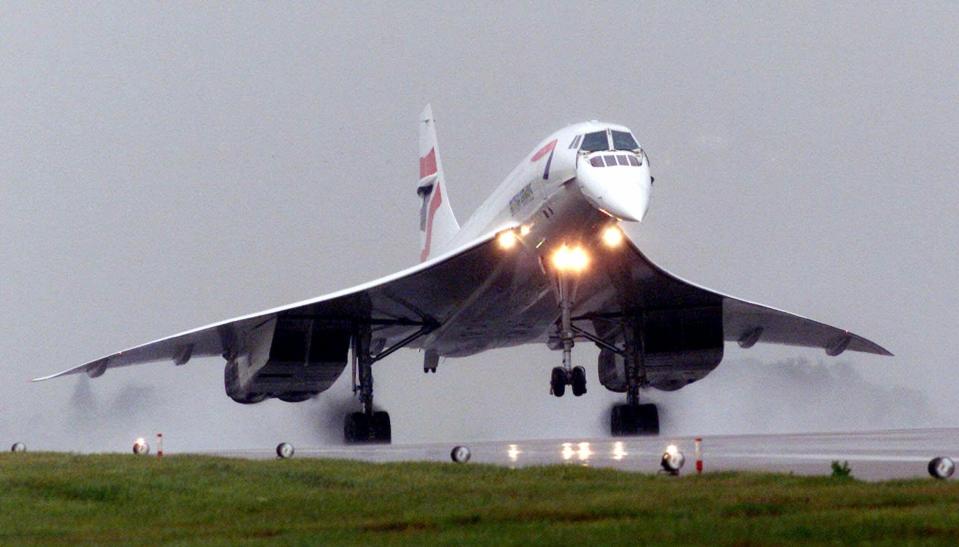
In normal flight, the nose and visor were raised.
The Concorde was operated by a crew of three: two pilots and a flight engineer.
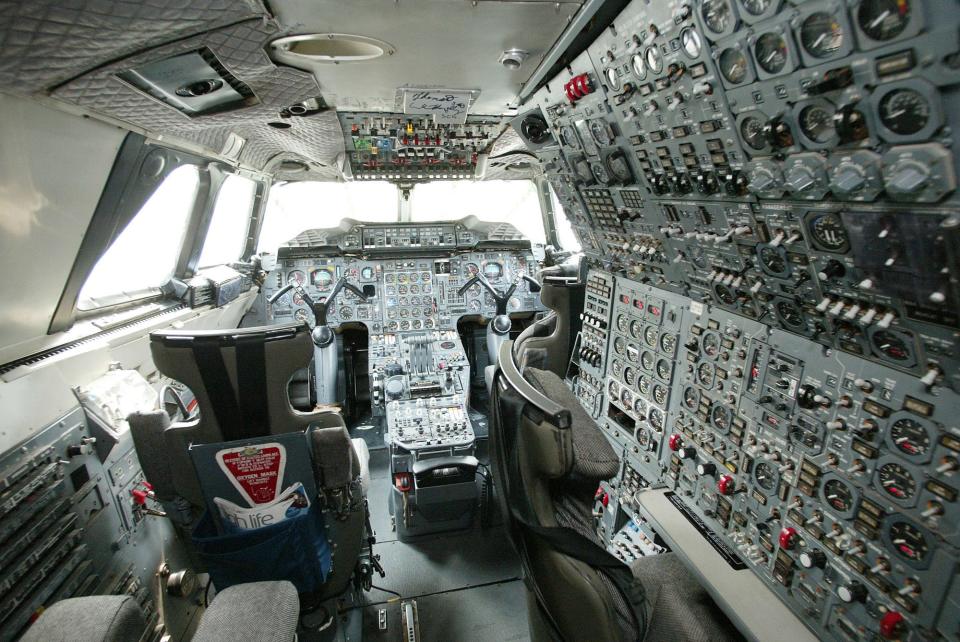
Flight engineers helped maintain the aircraft's center of gravity, cooling systems, fuel transfers, and other crucial tasks.
In 1967, the Concorde was presented to the public for the first time in Toulouse, France.
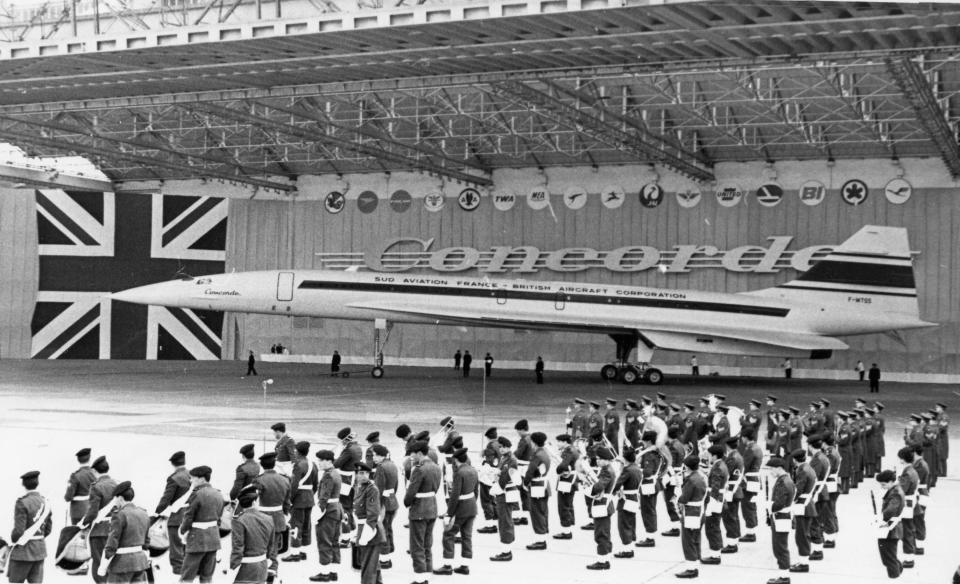
Members of the French Army band and Royal Air Force band played for the occasion.
The first Concorde prototype made its maiden flight on March 2, 1969.

The maiden flight lasted 27 minutes, the BBC reported. Its first supersonic flight followed on October 1, 1969.
More than a dozen airlines from around the world placed orders for the jet.
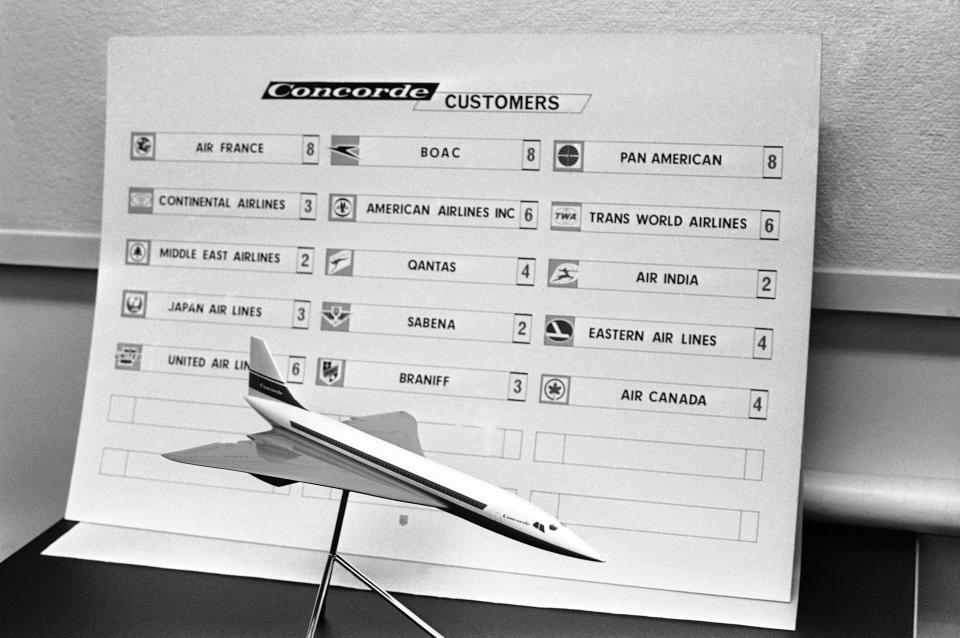
The sleek supersonic jet captivated the public immediately.
But the Concorde soon encountered opposition due to the loud sonic booms that resulted from breaking the sound barrier.
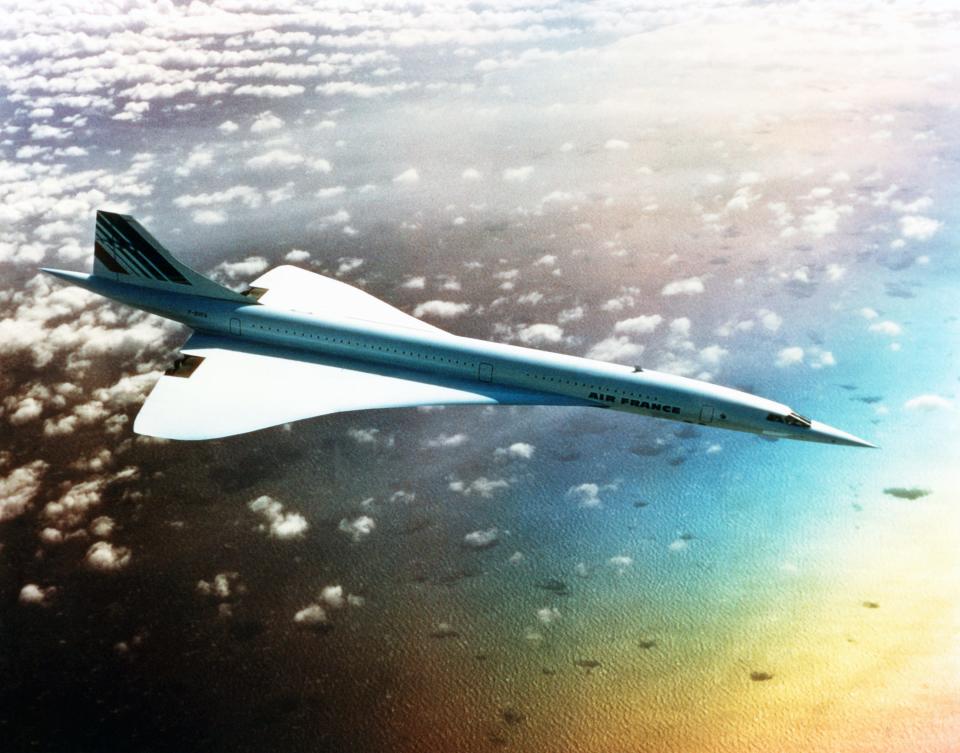
One of the byproducts of supersonic flight is the sonic boom, which can be unpleasant or distressing to those on the ground. As a result, the Concorde was limited to routes over water, with minimal time spent soaring over land.
In addition, residents near airports that were home to the Concorde fleet protested the amount of noise generated by the plane's four massive turbojet engines.
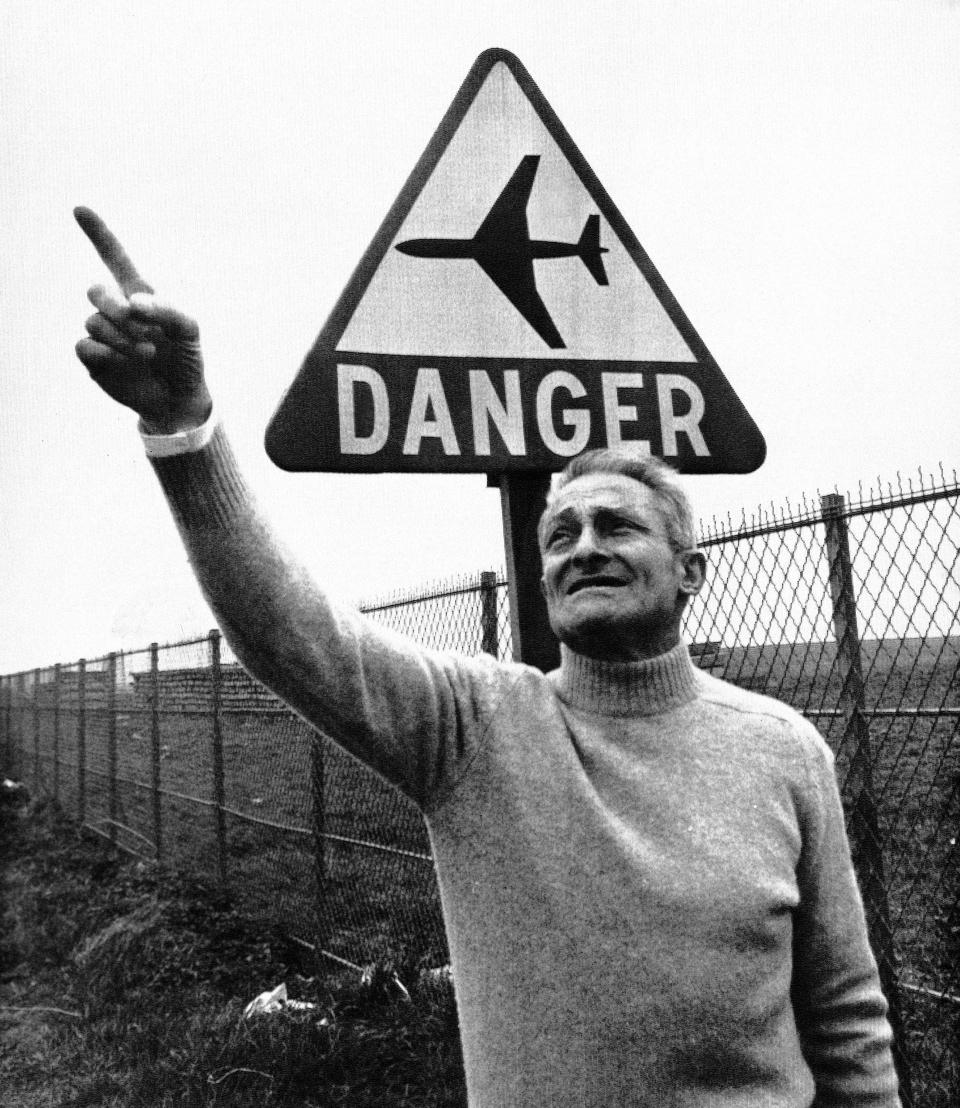
As a result, Concorde flights were further curbed.
Because of environmental and economic concerns stemming from the 1973 oil crisis, most of the Concorde's customers dropped their orders.
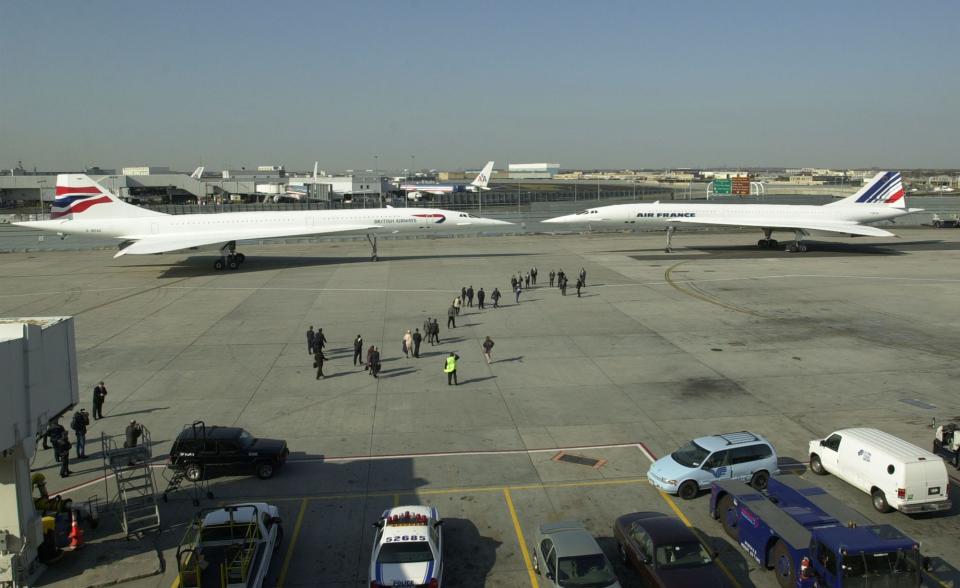
This left British Airways and Air France as the plane's only operators.
In total, 20 Concordes were produced, six of which were prototype test planes.
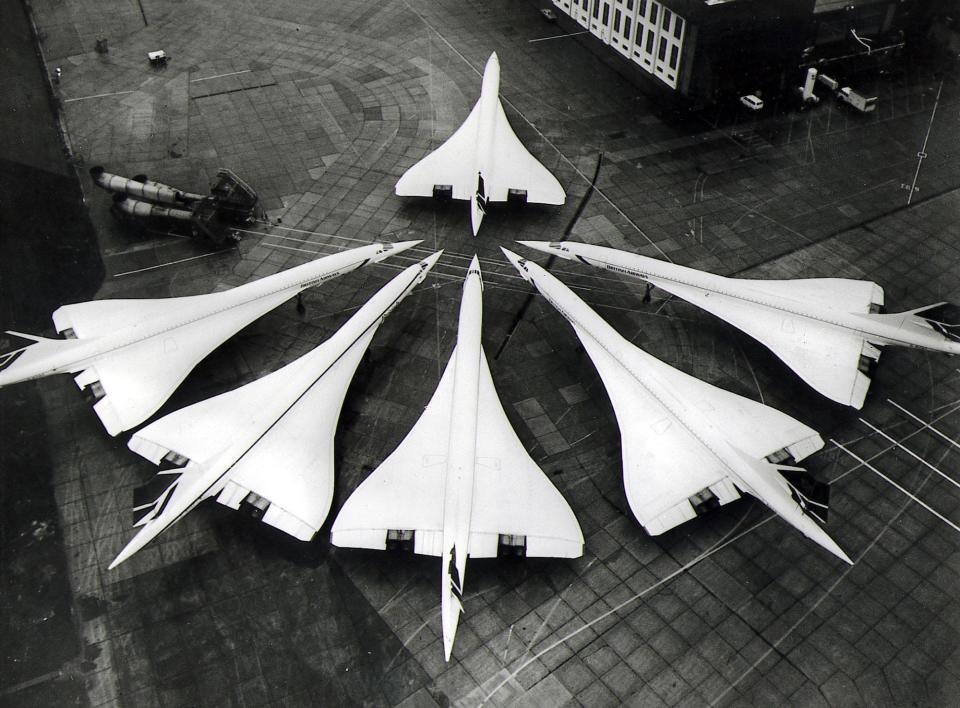
Of the 14 production Concordes, seven entered service with Air France and seven entered service with British Airways.
On January 21, 1976, two Concordes — one from each airline — took off simultaneously to mark the plane's first supersonic passenger flight.
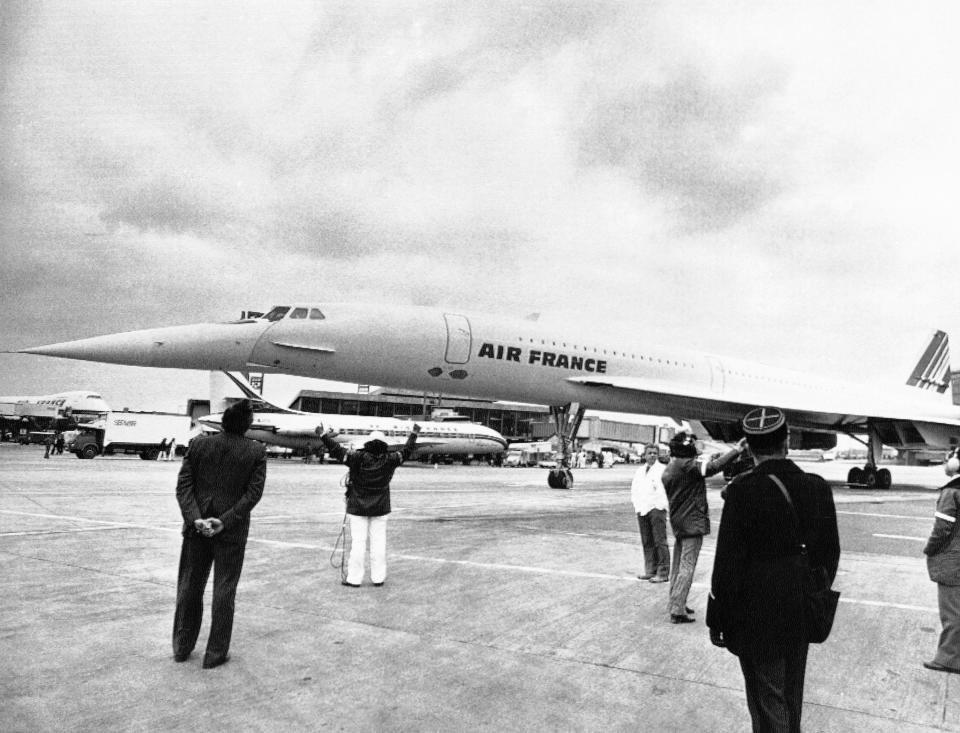
The Air France flight flew to Rio de Janeiro by way of Senegal, while the British Airways plane flew to Bahrain in the Persian Gulf.
Later that year, British Airways started scheduling transatlantic flights between London and New York.
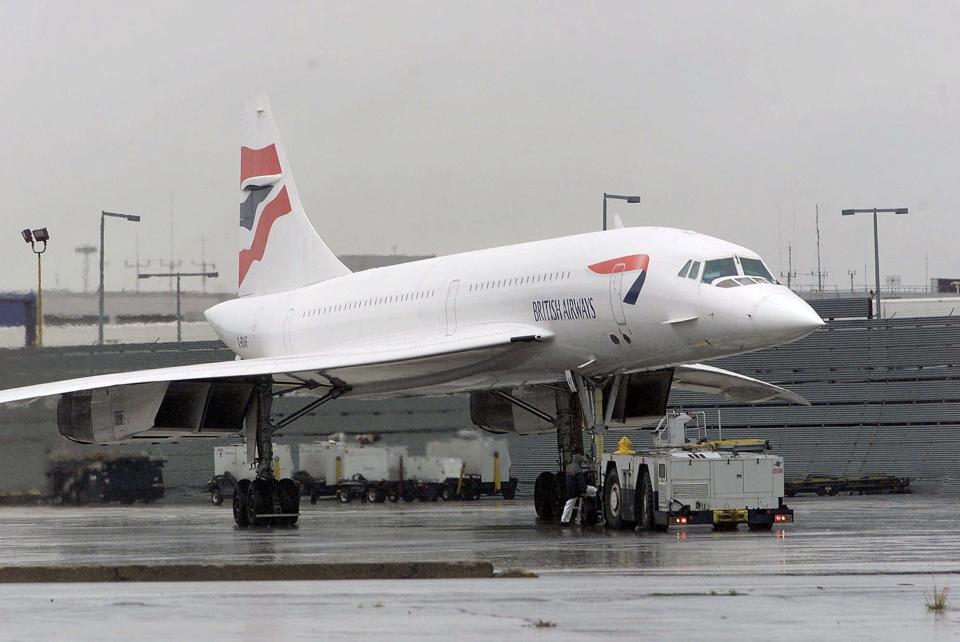
Cruising at more than twice the speed of sound and an altitude of up to 60,000 feet, the Concorde could cross the Atlantic in just three hours — a major improvement over the seven hours it took for a conventional jumbo jet to make the crossing.
In the beginning, the 100-passenger interior was simple and a bit austere.
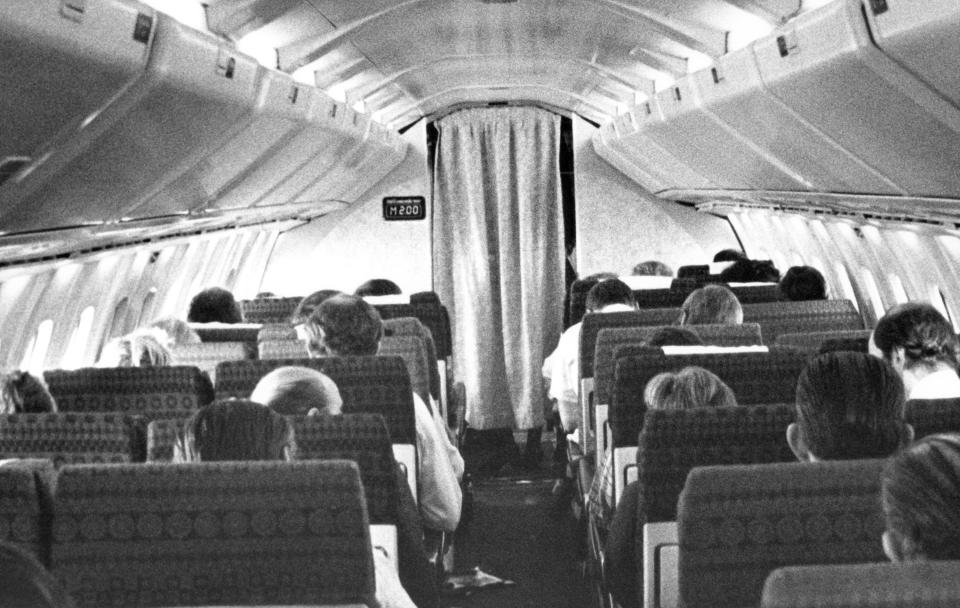
A display on the jetliner's left bulkhead showed when the plane reached the speed of Mach 2, or twice the speed of sound.
As the clientele became more posh, so did the decor.
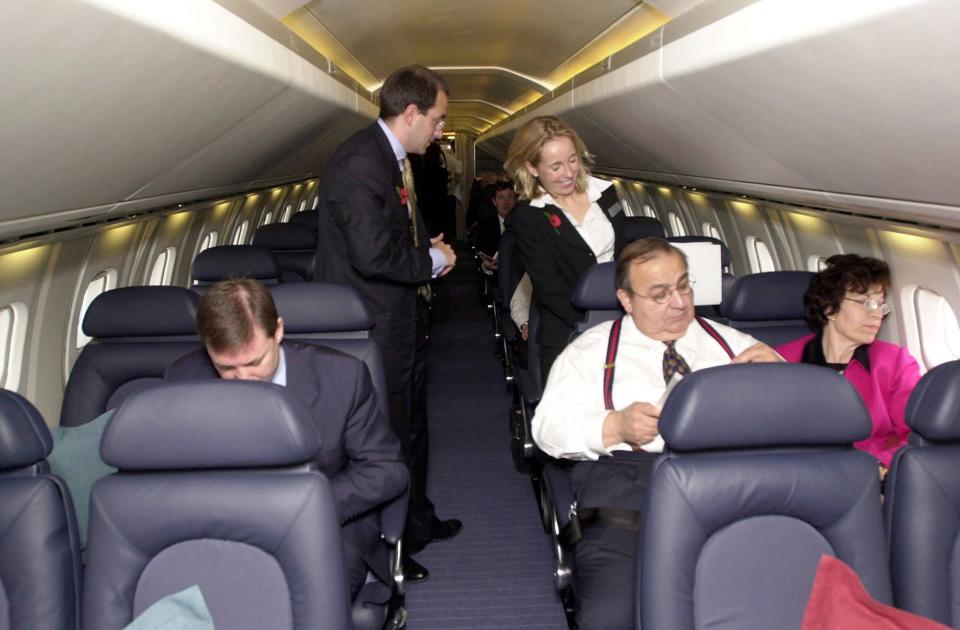
Soon, the Concorde became the preferred airborne choice of the rich and famous.
In the 1990s, the Concorde transported celebrities and royal family members.
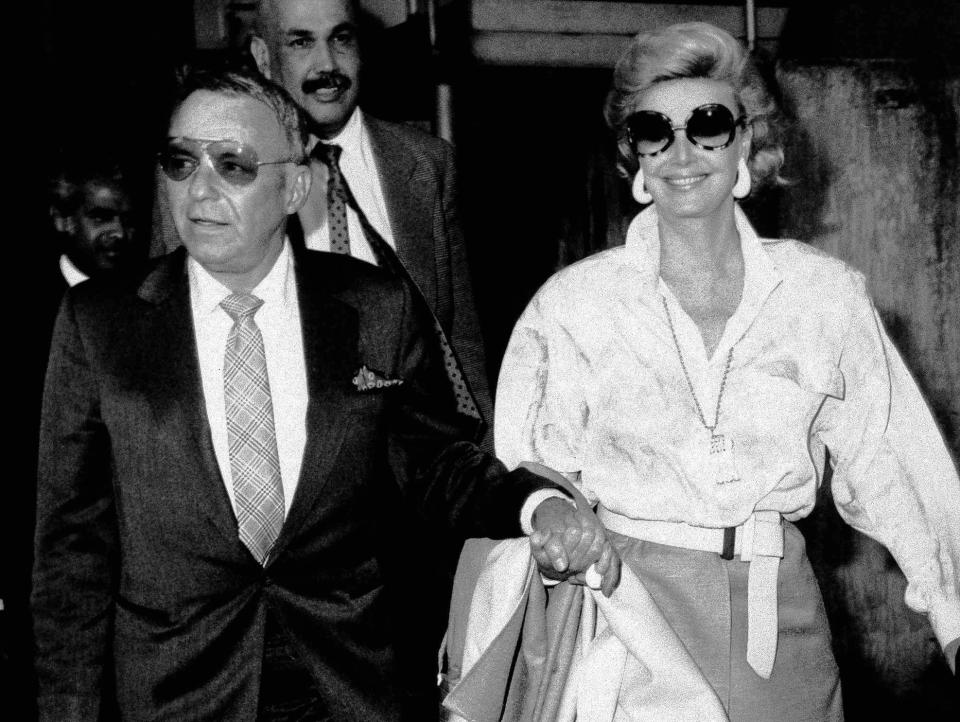
Frank Sinatra took a Concorde flight to London in 1984 on his way to a charity concert in Monaco.
Sarah Ferguson, the Duchess of York, explored Concorde's flight deck in 1987.
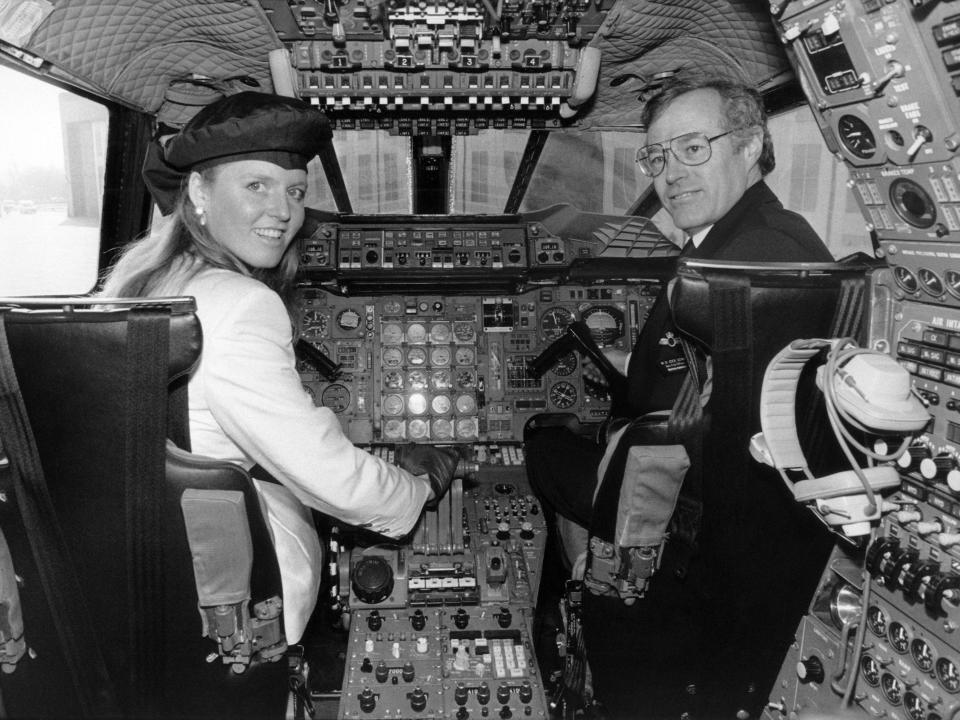
Ferguson earned her private pilot's license in 1987, and was the first woman in the royal family to do so, UPI reported.
Former British Prime Minister Tony Blair flew to New York aboard a Concorde in 1997.
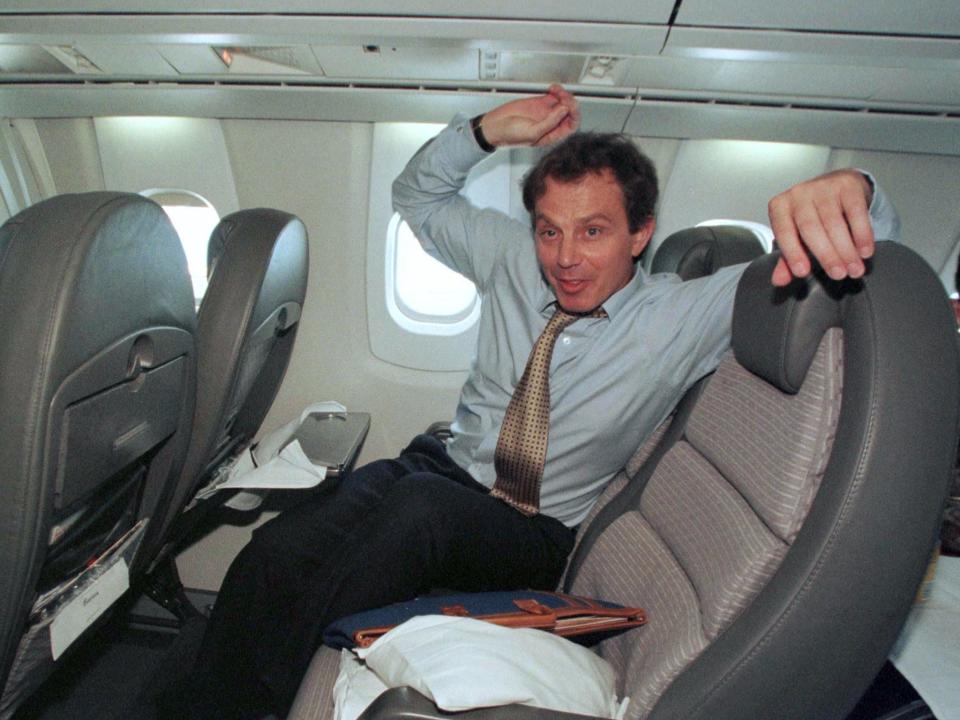
Blair flew to New York to attend a special session of the UN General Assembly.
Rock legend Sting served Champagne to Piers Morgan on a Concorde flight.
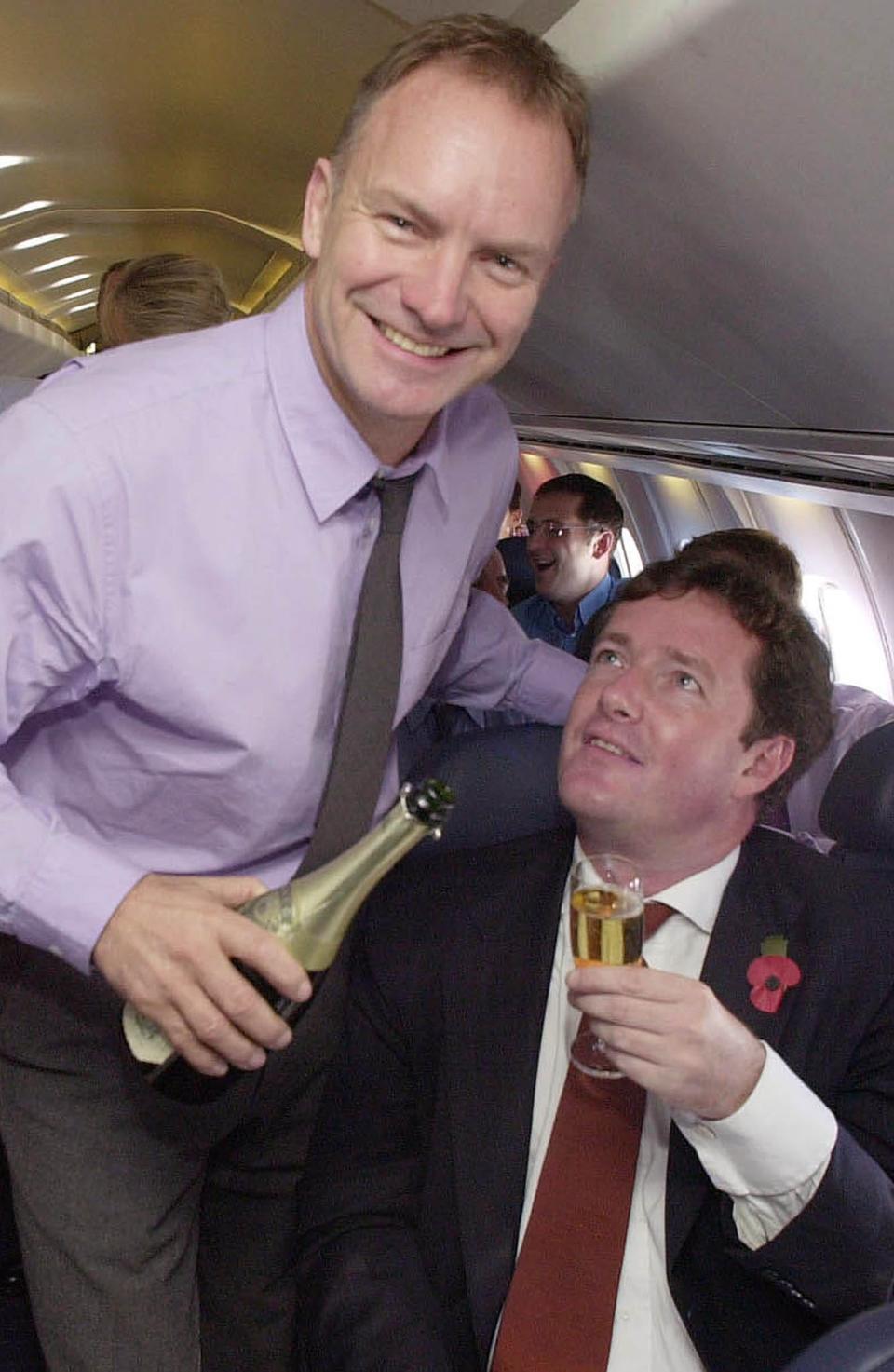
The two rubbed shoulders on a 2001 press flight.
The Concorde even served as the Queen Elizabeth II's royal transport.
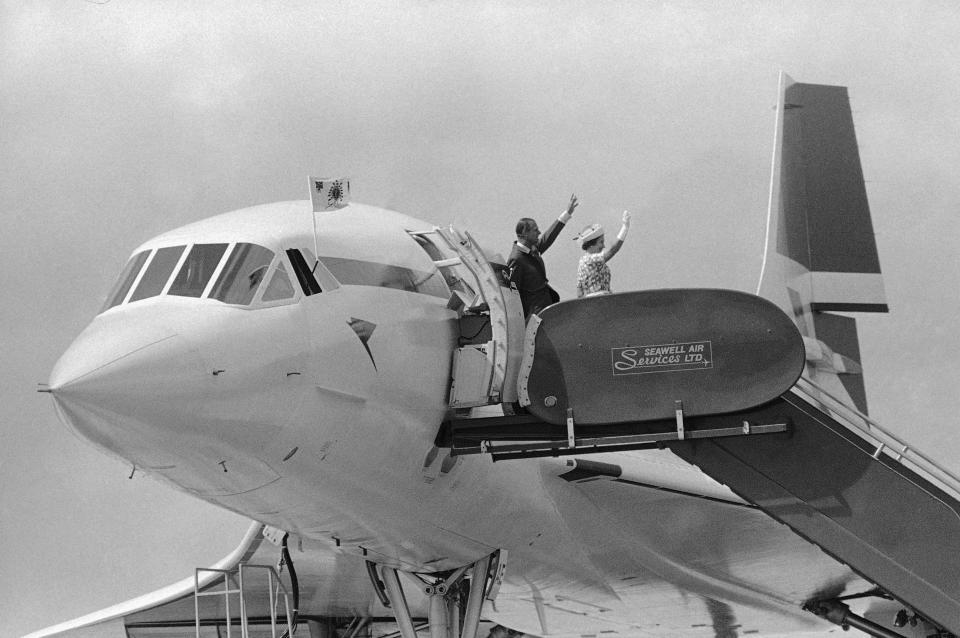
Queen Elizabeth traveled on Concorde planes for trips to Kuwait, Barbados, Saudi Arabia, and the United States from the late 1970s until the Concorde was retired in 2003, according to the Royal Collection Trust.
Every day, the Concorde fleet was stocked with fine Champagne and Beluga caviar.
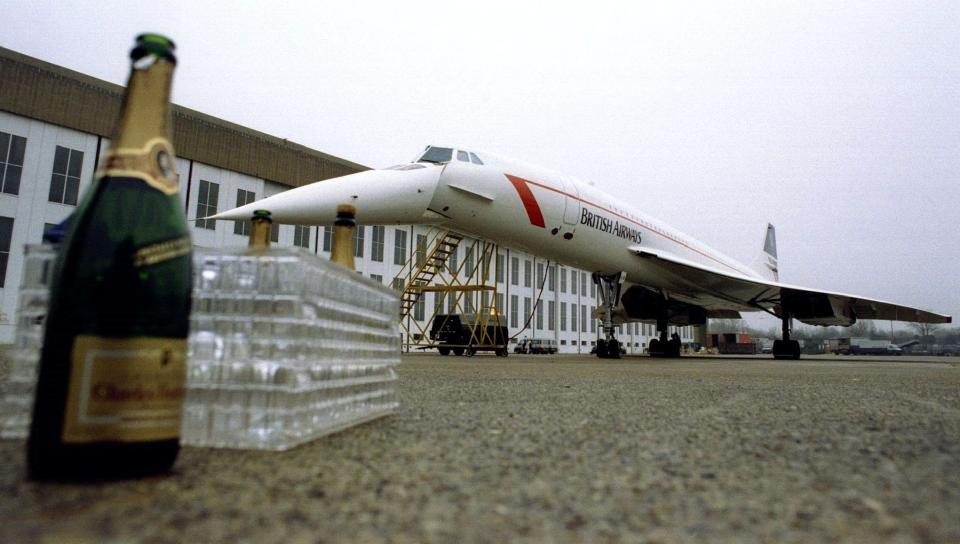
Concorde also had its own special sets of branded china.
The Concorde had a sparkling safety record until July 25, 2000, when an Air France Concorde burst into flames and crashed shortly after taking off.
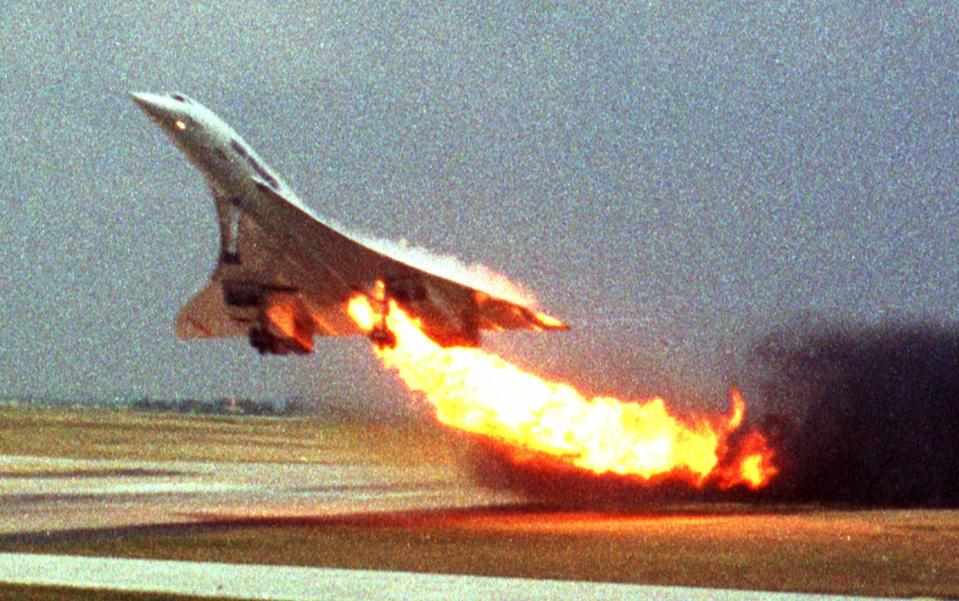
The plane caught fire after a blown tire ruptured the Concorde's fuel tanks, and 113 people died in the crash.
All 12 remaining Concordes were immediately grounded.
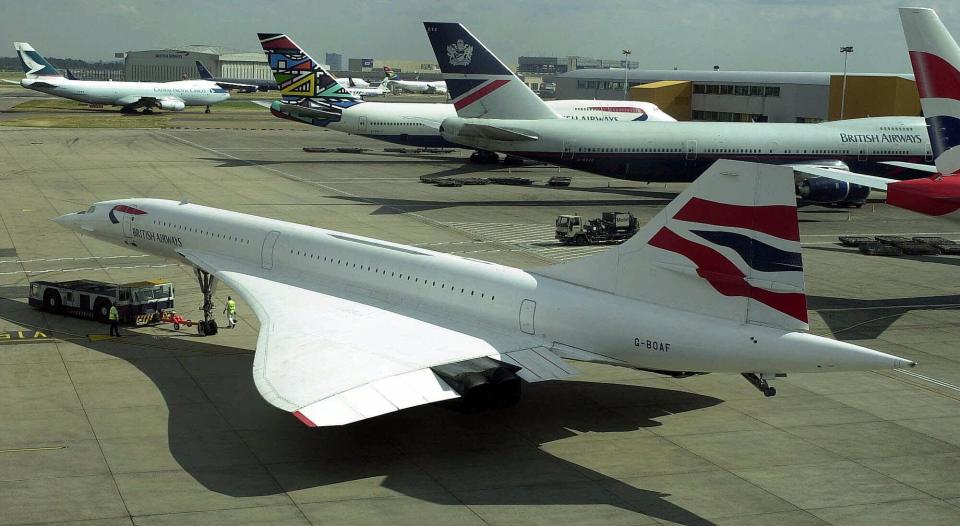
The planes were retrofitted with stronger fuel tanks.
Though the Concorde fleet returned to service in late 2001, the business never recovered.
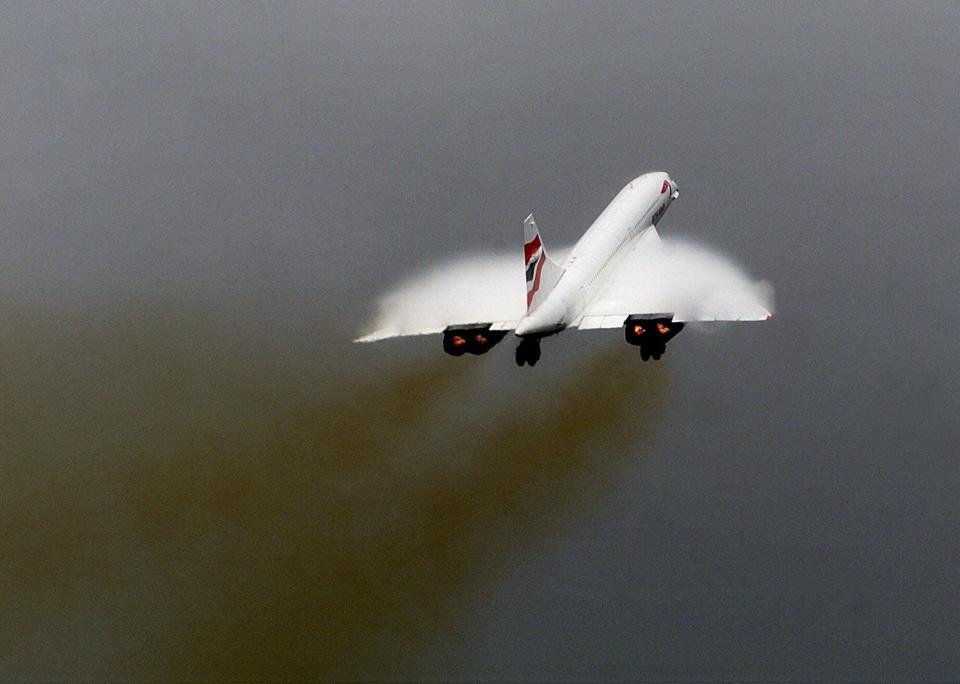
By spring of 2003, Air France and British Airways announced their intention to permanently retire the Concorde fleet.
British Airways executives blamed cuts to Wall Street's travel budgets post-9/11 and skyrocketing maintenance costs for its decision to ground the plane, The Guardian reported.
Air France operated its last commercial Concorde flight from New York to Paris on May 31, 2003.
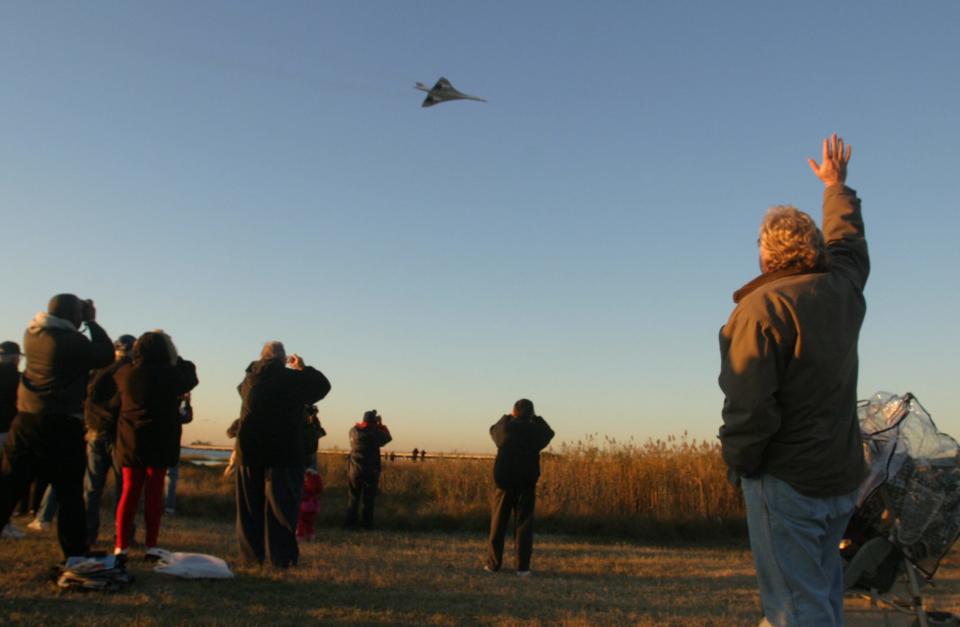
Onlookers waved goodbye to the Concorde as it climbed out of JFK Airport.
British Airways operated its last commercial Concorde flight on October 24, 2003, after it completed a farewell tour of the US.
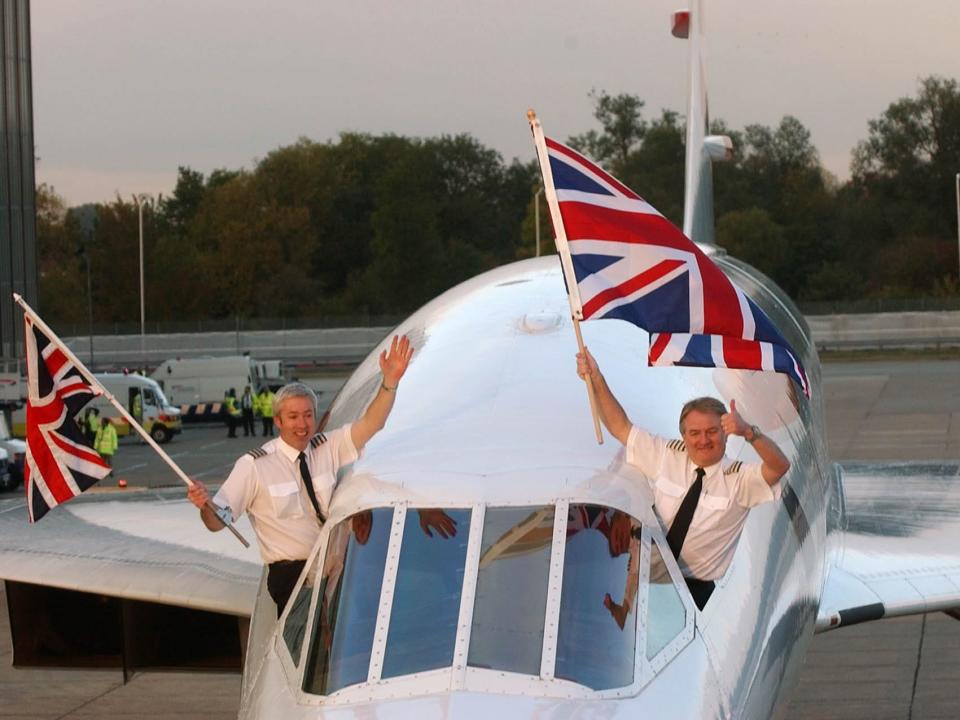
Over the skies of London, the flight out of New York joined up with two other Concordes. Together, the three supersonic jets celebrated the occasion by landing in succession at Heathrow Airport.
In 27 years of service, British Airways' fleet of Concordes made 50,000 flights and carried more than 2.5 million passengers, according to British Airways.
Now, the Concordes have become museum pieces.
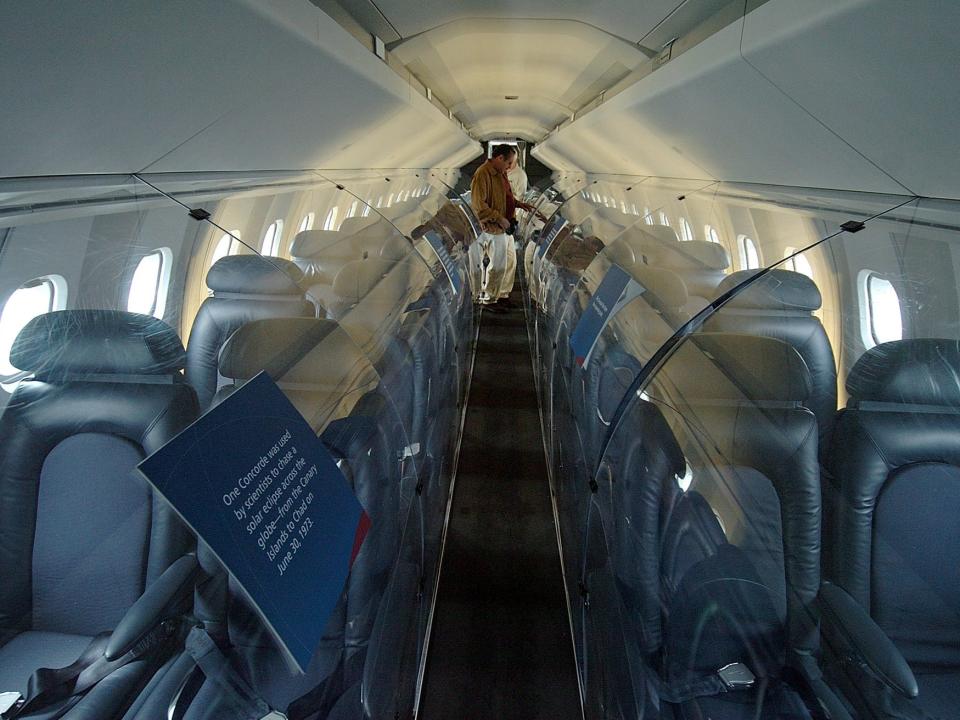
There are three places to see a Concorde on display in the United States: the Intrepid Sea, Air, and Space Museum in New York City, the National Air and Space Museum in Washington, DC, and The Museum of Flight in Seattle.
For many, the end of the Concorde represented not just the end of an era, but also a step backward for mankind.
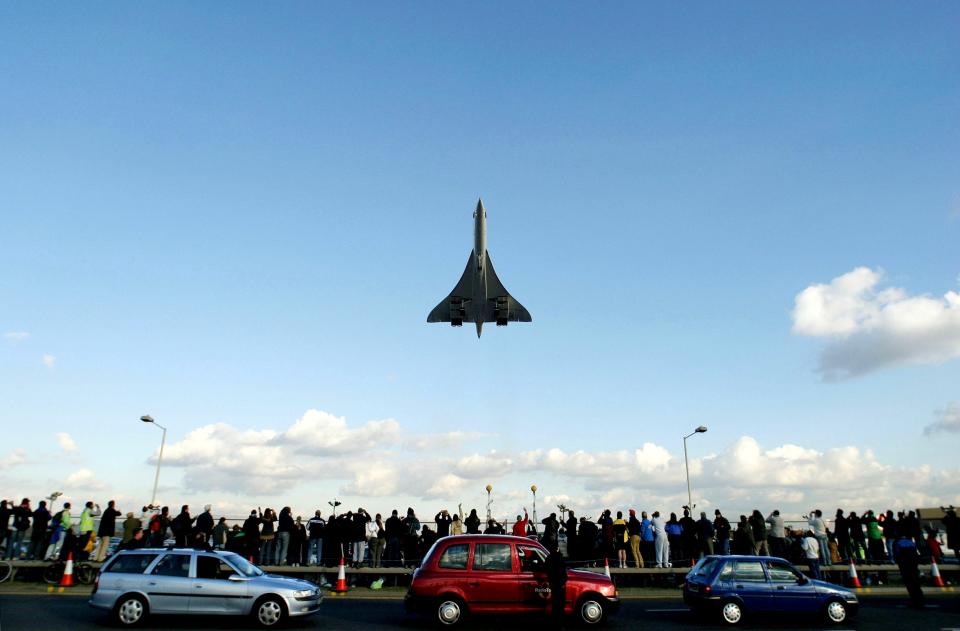
Despite being a financial flop, the Concorde's status as a technological marvel remains unblemished.
We no longer cross the Atlantic at twice the speed of sound. And we may never again.
Read the original article on Business Insider

